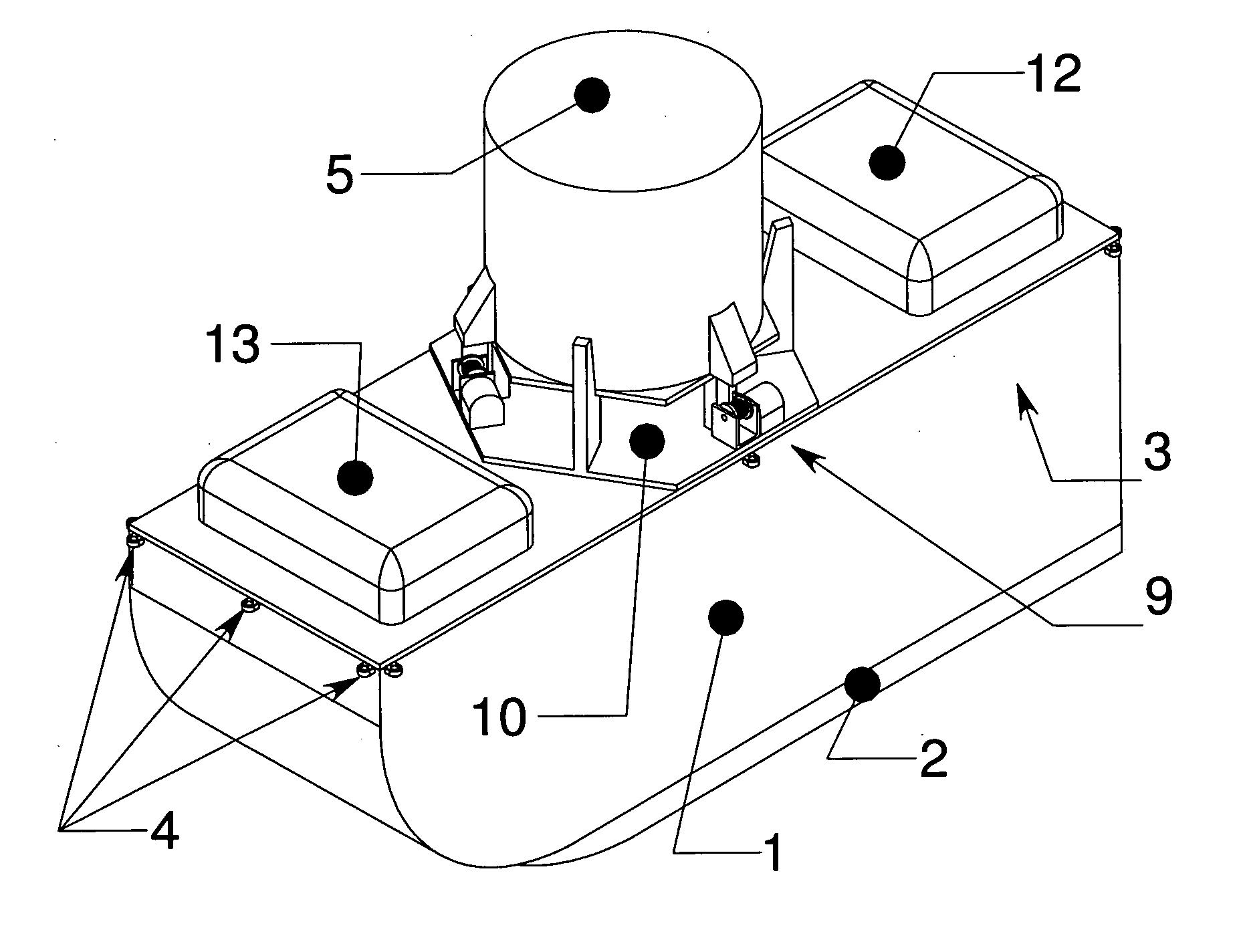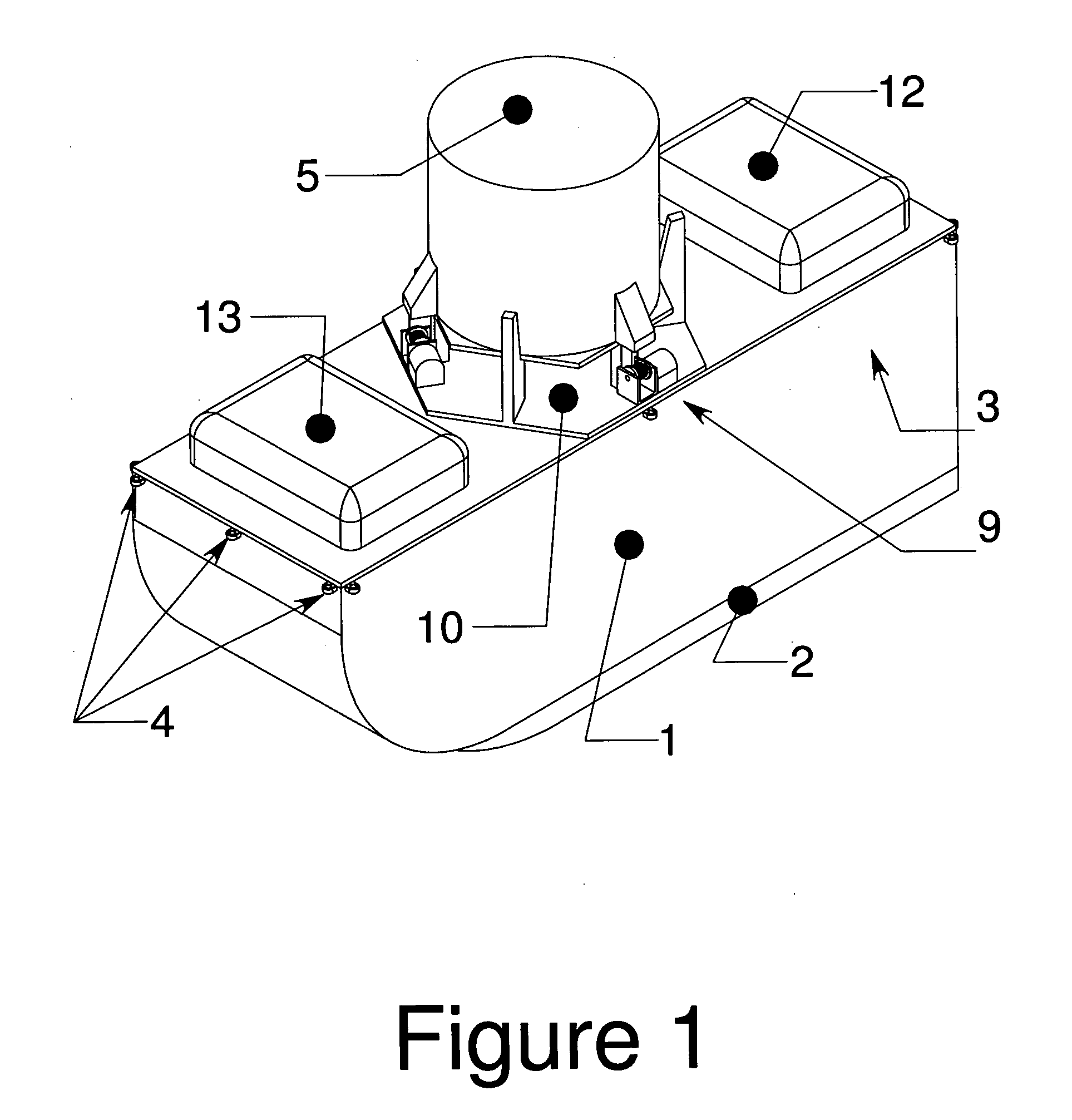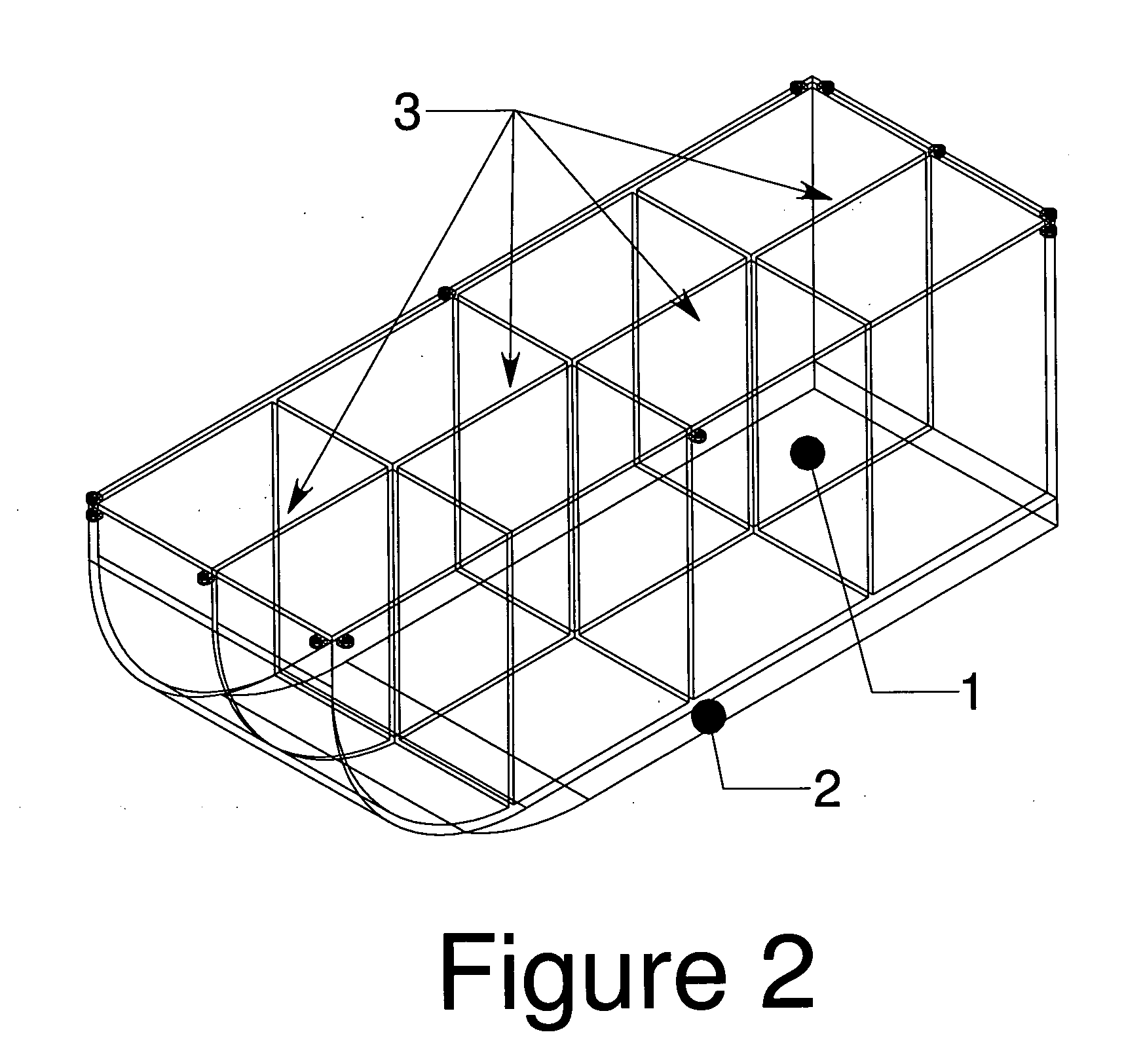System and method for deploying and retrieving a wave energy converter
a technology of wave energy converter and system, which is applied in the field of system and method for transporting, launching, mooring and retrieving wave energy converter, can solve the problems of significant safety and damage control problems, long delays and cost overruns, and time-consuming and expensive logistical operations for the commissioning of wecs, and achieve the effect of facilitating automatic alignment of wave energy converters
- Summary
- Abstract
- Description
- Claims
- Application Information
AI Technical Summary
Benefits of technology
Problems solved by technology
Method used
Image
Examples
Embodiment Construction
[0028]A preferred embodiment of a system for deploying, a wave energy converter in accordance with the invention, as illustrated in FIGS. 1 to 5, comprises a submersible structure in the form of a submersible barge structure 1. The barge structure 1 has a plurality of buoyancy chambers 3, with a combined capacity sufficiently large that when filled with gas they enable the barge structure 1 to float (see FIG. 2). In use, a wave energy converter (WEC) 5 can be mounted on the barge structure 1, transported to a site and launched by releasing the gas from the buoyancy chambers 3 and allowing them to fill with water. The WEC 5 is a basic buoy type WEC used for illustrative purposes. However the deployment system can also be used with other types of tethered wave energy converters.
[0029]The barge structure 1 preferably further comprises a ballast 2 with sufficient mass to act as a clump weight mooring for the WEC 5 when the buoyancy chambers 3 have been evacuated. Other mooring technique...
PUM
 Login to View More
Login to View More Abstract
Description
Claims
Application Information
 Login to View More
Login to View More - R&D
- Intellectual Property
- Life Sciences
- Materials
- Tech Scout
- Unparalleled Data Quality
- Higher Quality Content
- 60% Fewer Hallucinations
Browse by: Latest US Patents, China's latest patents, Technical Efficacy Thesaurus, Application Domain, Technology Topic, Popular Technical Reports.
© 2025 PatSnap. All rights reserved.Legal|Privacy policy|Modern Slavery Act Transparency Statement|Sitemap|About US| Contact US: help@patsnap.com



